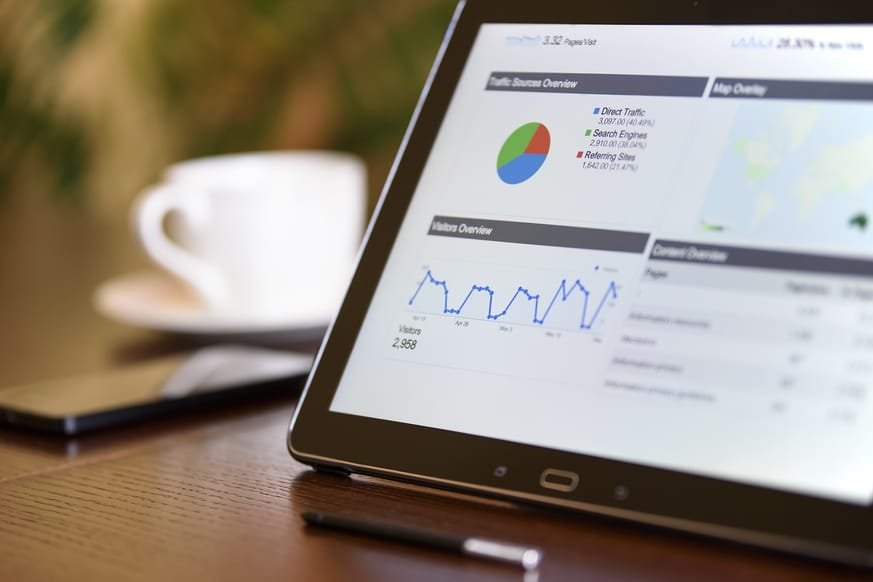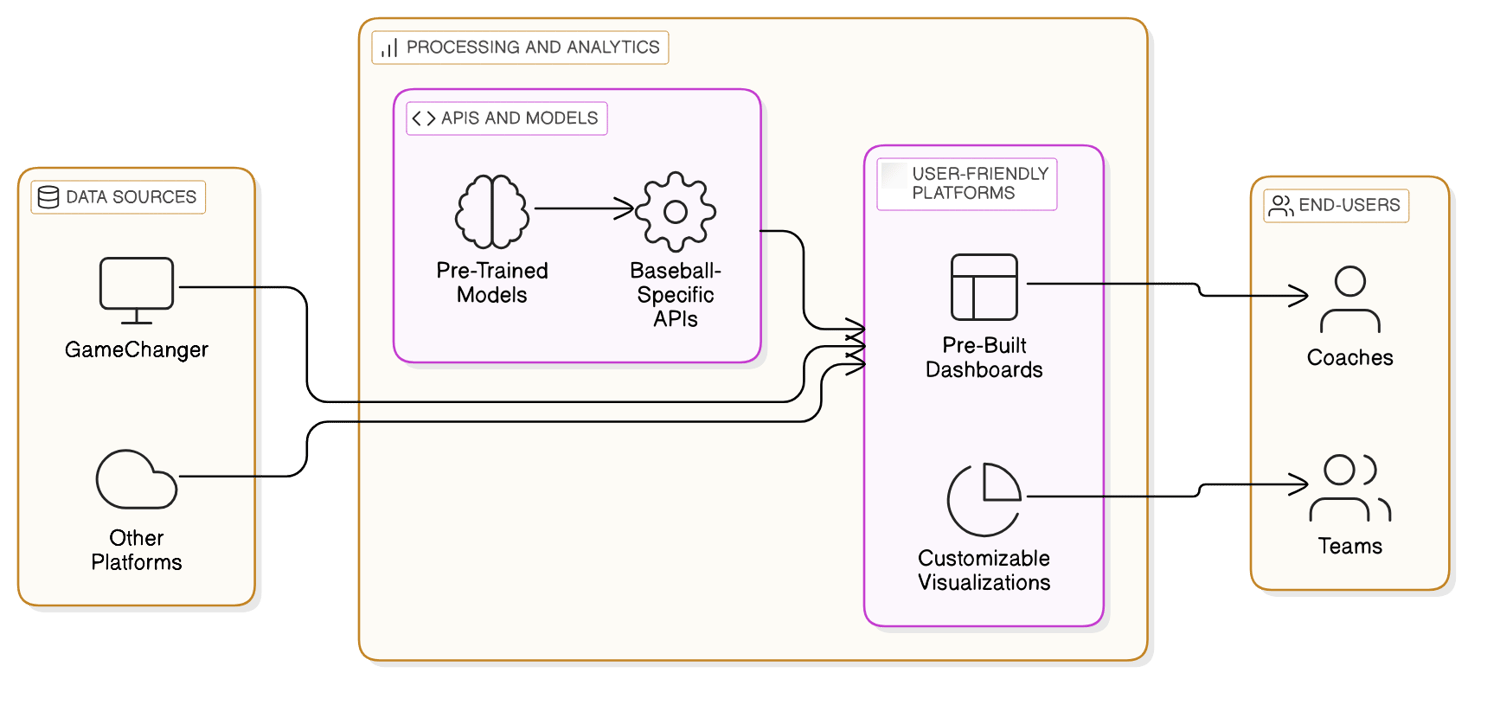Summary
This article explores the revolutionary advancements in sports data science that are reshaping baseball analytics, highlighting their significance for teams and fans alike. Key Points:
- AI-powered predictive modeling is transforming baseball analysis by using deep learning to forecast player performance and game strategies with greater accuracy than traditional methods.
- Interpretable machine learning techniques are gaining traction, allowing analysts to understand model predictions and build trust in AI-driven insights for scouting and player development.
- The integration of multimodal data—combining wearables, video analysis, and environmental factors—is creating a comprehensive view of player performance that was previously unattainable.
Revolutionizing Baseball: Why Data Science is Changing the Game
- Additional information :
- The Oakland A`s, pioneers in sabermetrics, are reportedly investing heavily in AI-powered prescriptive analytics to optimize pitching strategies in real-time, potentially giving them a significant competitive advantage.
- Several MLB teams are experimenting with reinforcement learning algorithms to simulate game scenarios and identify optimal batting lineups and defensive positioning based on various opponent and weather conditions.
- Early tests of prescriptive analytics systems show a promising increase in win probabilities, suggesting that this technology could revolutionize managerial decision-making during games.
Key Advancements in Baseball Data Science: A Quick Look
- ⚾ **Computer Vision & Deep Learning Integration**: Advanced CV/DL technologies enhance automated, real-time pitch tracking and player motion capture.
- 📊 **Enhanced Accuracy**: Traditional systems relied on manual entry; now, models analyze vast video datasets for precise metrics like pitch velocity and spin rate.
- 🚀 **Real-Time Insights**: Automating data collection allows immediate feedback during games, enabling strategic adjustments by coaches.
- 🔍 **Granular Player Analysis**: Detailed insights into swing mechanics, running speed, and fielding positions were previously unattainable manually.
- 📈 **Data Volume Expansion**: The resulting higher-dimensional datasets improve player evaluations and injury prevention strategies significantly.
After reviewing numerous articles, we have summarized the key points as follows
- The Moneyball data revolution has transformed how MLB teams use analytics to make decisions.
- Databricks` technology enhances sports analytics by providing tools for handling large datasets efficiently.
- Predicting pitcher performance involves analyzing previous game data and in-game pitch-by-pitch statistics.
- High school students interested in sports analytics can explore programming, machine learning, and statistics to prepare for future careers.
- Teams are increasingly focused on using data and biomechanics to develop players and improve performance.
- Collaboration between sports medicine researchers and science teams is essential for validating new technologies in player development.
It`s fascinating how the world of baseball has changed with the integration of data science. Just like in every other aspect of life, numbers can tell powerful stories. If you`re a fan or just curious about how your favorite team makes decisions, understanding these analytical methods can provide deeper insights into the game we love. Whether it`s predicting player performances or finding new strategies for success, data is becoming an indispensable part of baseball.
Extended Perspectives Comparison:| Aspect | Traditional Methods | Data-Driven Approaches | Technological Integration | Player Development Focus | Future Trends |
|---|---|---|---|---|---|
| Decision Making | Reliance on scouts` instincts and historical performance trends. | Utilizes advanced analytics to evaluate players based on comprehensive data metrics. | Incorporates AI algorithms for real-time game analysis and decision support. | Shifts towards personalized training regimens backed by data insights. | Growing emphasis on predictive modeling for strategic planning. |
| Performance Prediction | Limited to season averages and subjective evaluations. | Analyzes pitch-by-pitch statistics, player fatigue levels, and matchup history for accurate forecasts. | Employs machine learning models to simulate game scenarios and outcomes. | Integrates biomechanics with cognitive training methods to enhance skills. | Increased use of wearable technology for continuous performance tracking. |
| Educational Pathways | Basic statistics courses offered in some schools; limited exposure to analytics tools. | Strong focus on programming languages (Python, R) and statistical software in academic curricula. | Emphasis on interdisciplinary studies combining sports science, data analytics, and computer science. | Encouragement of internships or projects involving real-world sports data analysis. | Emerging online platforms providing courses specifically tailored to sports analytics. |
| Collaboration Efforts | Occasional partnerships between teams and universities for research purposes. | Structured collaborations between sports medicine researchers and analytics teams are becoming standard practice. | Cross-disciplinary workshops that foster knowledge exchange among scientists, coaches, and players are gaining traction. | Innovations validated through rigorous testing protocols before implementation in player development programs. | Rising trend of open-source platforms facilitating collaborative research efforts. |
How is Data Science Transforming Scouting and Player Development?
What New Metrics are Reshaping Our Understanding of Baseball Performance?
- Additional information :
- The recent increase in xRV adoption across MLB teams highlights the growing importance of context-aware metrics in player evaluation and strategic planning.
- A study by the MLB`s analytics department found a strong correlation between a pitcher`s xRV and their actual on-field performance, suggesting xRV as a valuable predictor of future success.
- The use of integrated pitch-to-plate metrics, combined with advanced tracking data, is expected to lead to more nuanced scouting reports and more effective player development strategies.

 Free Images
Free ImagesCommon Questions: What is Baseball Analytics and How Does it Work?
**Common Questions: What is Baseball Analytics and How Does it Work?**
❓ **What are actionable insights in baseball analytics?**
🔍 Actionable insights utilize advanced machine learning to enhance decision-making, moving beyond traditional metrics.
❓ **How do deep learning models contribute?**
🧠 Models like RNNs and CNNs analyze vast data sets to predict player performance with remarkable accuracy.
❓ **What kind of data is used for predictions?**
📊 Data includes pitch type, velocity, location, swing mechanics, and environmental conditions.
❓ **What is the accuracy of these predictions?**
🎯 Some studies report prediction accuracy over 80%, allowing teams to refine pitching strategies in real-time.
❓ **What advantage does this provide teams?**
🏆 Teams can exploit hitter weaknesses by predicting optimal pitch sequences based on immediate game context.
Delving Deeper: Advanced Statistical Concepts in Baseball Analysis
- **What is the limitation of wOBA?** 🏏
wOBA fails to capture nuanced hitter-pitcher interactions.
- **What advancements are being made?** 🔍
Researchers are integrating contextualized pitch sequencing models using Markov chains and RNNs.
- **How does this improve analysis?** 📈
It predicts hit probabilities based on previous pitches, hitter tendencies, and pitcher performance in similar situations.
- **Can you give an example?** ⚾
A model might assign higher home run probabilities after a fastball-curveball sequence compared to other sequences.
- **Why is this important?** 🌟
This approach provides a more granular understanding of offensive performance, enhancing predictive capabilities significantly.
Is Data Science Accessible to Amateur Baseball Teams?
Putting it into Practice: Tools and Techniques for Baseball Data Analysis
To effectively analyze baseball data, practitioners can utilize a variety of tools and techniques that enhance their ability to derive insights from complex datasets. Below are the steps to set up a basic baseball analysis environment using Python, along with essential libraries and techniques.
1. **Environment Setup**:
- Install Python (preferably version 3.7 or above) from the official website.
- Use package managers like `pip` or `conda` to manage your libraries.
2. **Install Required Libraries**:
Open your terminal or command prompt and run the following commands to install necessary libraries:
pip install pandas numpy matplotlib seaborn statsmodels scikit-learn
3. **Data Acquisition**:
- Obtain historical baseball data from reliable sources such as Retrosheet, FanGraphs, or MLB's Statcast API.
- Load the dataset into a Pandas DataFrame for easier manipulation:
import pandas as pd
data = pd.read_csv('path_to_your_baseball_data.csv')
4. **Data Cleaning**:
- Inspect your data for missing values and outliers.
print(data.info())
print(data.describe())
# Fill missing values or drop them based on analysis requirements
data.dropna(inplace=True)
5. **Exploratory Data Analysis (EDA)**:
- Visualize key statistics using Matplotlib and Seaborn.
import matplotlib.pyplot as plt
import seaborn as sns
sns.histplot(data['home_runs'], bins=30)
plt.title('Distribution of Home Runs')
plt.xlabel('Home Runs')
plt.ylabel('Frequency')
plt.show()
# Correlation matrix to identify relationships between variables
correlation_matrix = data.corr()
sns.heatmap(correlation_matrix, annot=True)
plt.show()
6. **Statistical Modeling**:
- Implement regression models using StatsModels or Scikit-Learn to predict player performance metrics.
from sklearn.model_selection import train_test_split
from sklearn.linear_model import LinearRegression
X = data[['at_bats', 'walks', 'strikeouts']]
y = data['batting_average']
X_train, X_test, y_train, y_test = train_test_split(X, y, test_size=0.2)
model = LinearRegression()
model.fit(X_train, y_train)
predictions = model.predict(X_test)
7. **Model Evaluation**:
- Evaluate your model’s performance using metrics such as Mean Absolute Error (MAE) or R-squared score.
from sklearn.metrics import mean_absolute_error, r2_score
mae = mean_absolute_error(y_test, predictions)
r2 = r2_score(y_test, predictions)
print(f'Mean Absolute Error: {mae}')
print(f'R-squared: {r2}')
8. **Advanced Techniques**:
Explore machine learning methods like clustering (K-means), classification algorithms (Random Forest), and time-series forecasting depending on the complexity required in your analysis.
By following these steps systematically while adapting according to specific project needs will provide an effective framework for conducting thorough baseball analyses through sports data science methodologies.

The Future of Baseball Analytics: What's Next?
Conclusion: Embracing the Data-Driven Future of Baseball
Reference Articles
Baseball & Data: Revolutionizing Sports with Data Science
Discover how Moneyball's data revolution and Databricks' tech are changing sports analytics, driving new strategies in the industry.
Source: AlationMLB Sports Analytics Data Science
In this project, our goal is to predict the pitcher performances by using previous years' game data and in-game pitch by pitch data for the Major League ...
Source: Viraj ThakkarWhat should I major to work in a job with baseball analytics? : r/Sabermetrics
Currently in high school and currently unsure what I want to major in. I would like to work for an MLB team in their analytics department or whatever its ...
Source: Reddit · r/SabermetricsApplying Data Science to Baseball | by Ben Earnest, M. Sc.
Data science has made a significant impact on MLB, influencing decisions both on and off the field. It affects how teams construct their rosters, develop their ...
Source: Medium · Ben Earnest, M. Sc.State of Analytics: How the Movement Has Forever Changed Baseball
Sports Illustrated supported Sarris' theory by describing the race that's going on amongst teams to develop hitters through data and biomechanics – technology ...
Source: Stats PerformA Beginner-Friendly Intro to Data Science in Baseball
Use the basics of programming, machine learning, and statistics to go in-depth and gain a greater understanding of your favorite players' ...
Source: Medium · Lucas GoldfarbTop 24 Sports Analytics Projects & Datasets (Updated for 2024)
MLB Sports Analytics Projects. Almost all MLB baseball teams employ data scientists and statisticians to predict player performance and gain a ...
Source: Interview QueryData analytics effects in major league baseball
Sports medicine researchers should collaborate with sports science teams to continue investigating the validity and reliability of emerging technology, assist ...
Source: ScienceDirect.com


 ALL
ALL Sports Data Science
Sports Data Science
Related Discussions